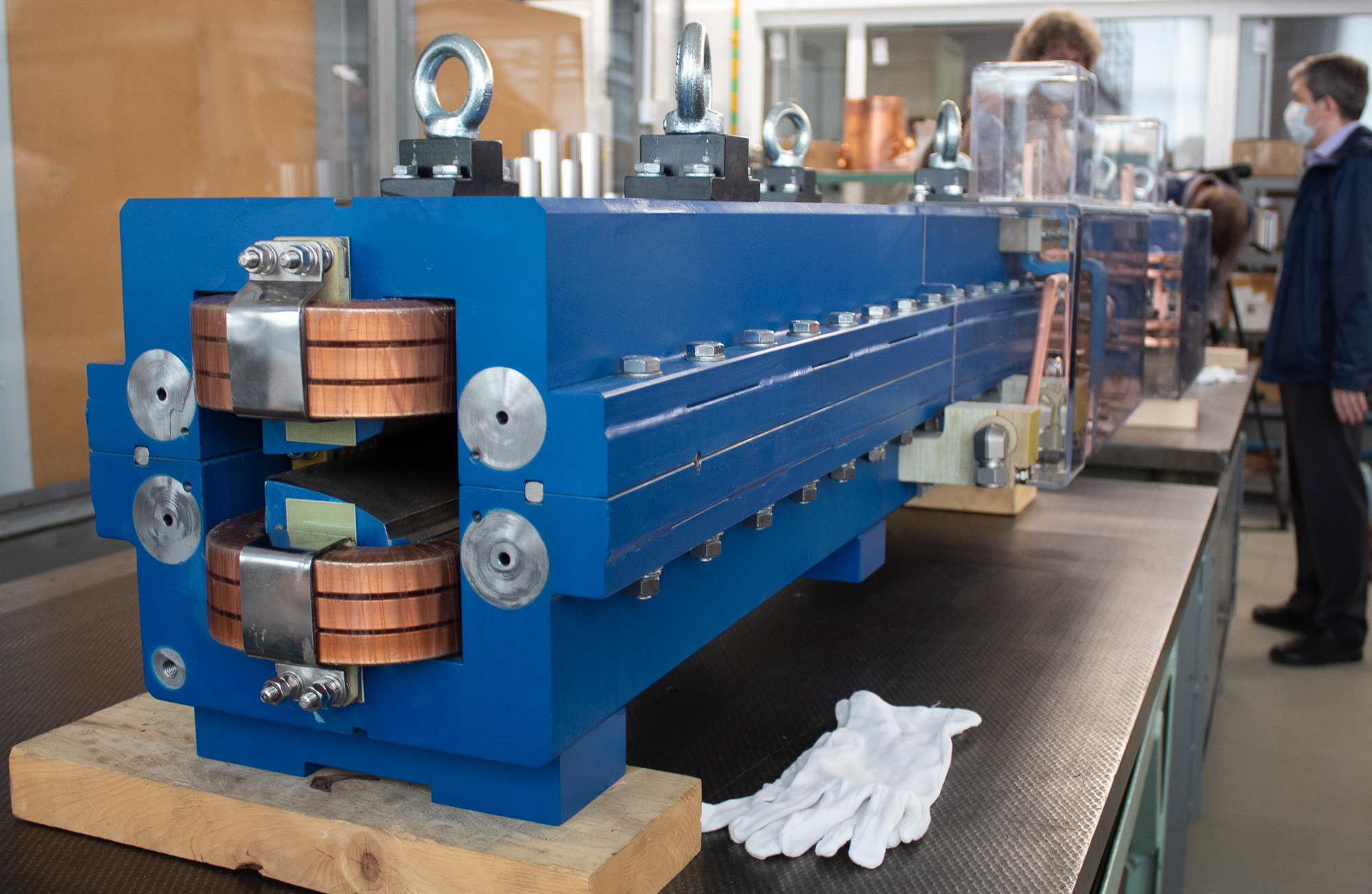
Phone: +7 (383) 330-67-71, Fax: +7 (383) 330-80-56, E-mail: bic@catalysis.ru
5 Lavrentiev Ave., 630090, Novosibirsk, Russia

Phone: +7 (383) 330-67-71, Fax: +7 (383) 330-80-56, E-mail: bic@catalysis.ru
5 Lavrentiev Ave., 630090, Novosibirsk, Russia
24 June 2021
The experimental plant (EP) of Budker Institute of Nuclear Physics began manufacturing the magnet elements for the injection complex of Shared Research Facility “Siberian Circular Photon Source” (SRF “SKIF”). The main and most massive elements of the complex are dipole magnets. The largest of them weighs 1.2 tons.
“The magnet system of the injection complex of SRF “SKIF” includes various magnets, — says Dr. Sergey Sinyatkin, Senior Researcher of BINP, — and the dipole magnets are principal and the most complex of them, since they perform several functions at once: forming of the closed race-track, focusing of the beam, and some others, and all this within the wide range of the beam energy from 200 MeV to 3000 MeV. The operation quality of these magnets determines the efficiency of operation of the main storage ring of SKIF, including the reaching of the record parameters of this 4+ generation photon source”.
The booster dipole magnets divide into two types, focusing (28 magnets) and defocusing (32 magnets). They consist of the upper and lower halves with coils of thick copper bus along which the 800 A current flows creating a powerful magnetic field on the race-track that turns the electron beams with the energy of 3 GeV.

The manufacturing of the injection complex consisting of linear booster, channels of the beam transport, and booster synchrotron in which the beam accelerates to the nominal operating power and emit into the main ring is the key task of the realization of the first part of the project. All main elements of the accelerator complex are supposed to be made at the experimental plant of BINP.
“The synchrotron magnets are complex, combined, multifunctional, which is necessary to make the accelerator smaller in size and cheaper as well as to obtain the beam parameters that are best for injection. So their manufacturing is a complicated task. It is worth mentioning that the magnet pole is made with the accuracy of 50 micron as related to the reference surface over its whole length (~ 1.3 m). For comparison, the human hair is 80 micron thick. However, we are certain of success, since the technology of manufacturing such magnets is well developed in BINP, about ten years ago we made similar devices for the Brookhaven National Laboratory in the USA, and since then we preserved the experience, technologies, and the set of equipment”, said Sergey Sinyatkin.
SRF “SKIF” is a 4+ generation source of synchrotron radiation with unique characteristics and 3 GeV energy that is being constructed within the “Nauka i Universitety” (“Science and Universities”) National Project and “Akademgorodok 2.0” program in Koltsovo science town in Novosibirsk oblast as an element of the Russian network of mega-science plants. It will allow conducting studies with terminally bright and intensive beams of X-rays for various areas – chemistry, physics, materials science, biology, geology, etc. SRF “SKIF” is planned to include 30 beamlines, where several thousands of researchers from Russia and abroad would work every year.
The Federal Research Center Boreskov Institute of Catalysis is the Customer and Developer of the “SKIF”. The object is designed by the Central Design and Technology Institute (AO “TSPTI”, affiliated with the “TVEL” fuel company of Rosatom). The General Contractor is “Kontsern Titan-2”, also part of Rosatom. The only provider for manufacturing and launching of the technologically sophisticated equipment for SRF “SKIF” is Budker Institute of Nuclear Physics. The source of synchrotron radiation is planned to be made by the end of 2023, and in 2025 the research should start at the first six beamlines.
Source: Press-Service of Budker Institute of Nuclear Physics